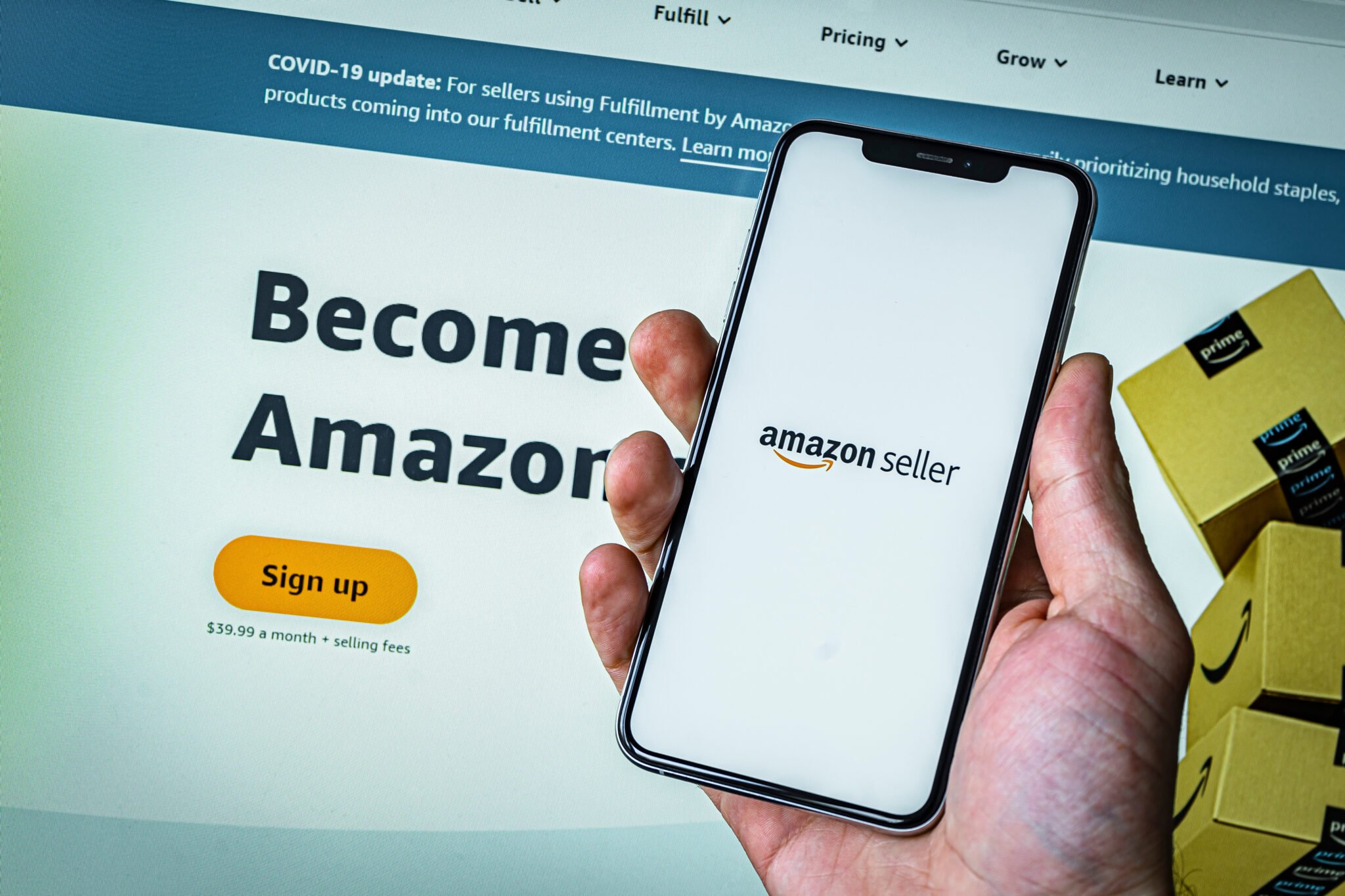To win on Walmart Marketplace in 2025, smart pricing is critical. This complete guide walks you through how Walmart repricing software works, what features to look for, and which tools can help you stay competitive. Learn how top sellers automate pricing, increase visibility, and stay compliant with Walmart’s strict rules.
Introduction: The New Reality of Walmart Marketplace
Walmart Marketplace has transformed from an emerging channel into a powerhouse eCommerce platform. With over 150,000 sellers competing for customer attention, the marketplace now processes billions in annual sales. But unlike five years ago, simply listing your products isn’t enough anymore.
Competition has intensified dramatically. Sellers who once enjoyed easy visibility now find themselves buried on page three. The difference between thriving and struggling often comes down to one critical factor: pricing strategy.
Manual price adjustments no longer cut it. By the time you’ve manually updated 50 products, your competitors have already adjusted theirs 500 times using automation. This guide reveals everything you need to know about Walmart repricing software—from how it works to which tools deliver real results.
Here’s what we’ll cover:
- Why repricing has become essential for Walmart sellers
- How repricing software actually works behind the scenes
- Must-have features that separate good tools from great ones
- Top repricing solutions compared side-by-side
- Step-by-step setup instructions
- Common mistakes that cost sellers thousands
Why Repricing Matters on Walmart Marketplace
The Walmart Algorithm Doesn’t Wait
Unlike Amazon’s Buy Box system, Walmart uses a different approach to determine which sellers get visibility. The platform’s search algorithm considers multiple factors when ranking product listings, with price and shipping being two of the most influential.
When a customer searches for “wireless headphones,” Walmart’s algorithm evaluates hundreds of listings in milliseconds. Competitive pricing combined with favorable shipping terms significantly increases your chances of appearing in top search results. Sellers who maintain strategic pricing consistently outrank those who don’t.
Walmart’s Strict Pricing Policies
Walmart enforces two critical pricing rules that every seller must understand:
Price Parity Policy: Your Walmart prices cannot exceed your prices on other marketplaces, including your own website. Walmart actively monitors competitor sites and will suppress listings that violate this rule.
Price Leadership Position: Walmart expects competitive pricing that reflects its brand promise of everyday low prices. Overpriced items face consequences ranging from reduced visibility to complete delisting.
These aren’t empty threats. According to Walmart Seller Help documentation, thousands of listings get suppressed quarterly for pricing violations. The financial impact can be devastating—one seller reported losing $40,000 in monthly revenue after accidental suppression.
Real-World Impact: The Numbers Don’t Lie
Consider this case study from a home goods seller who implemented repricing software in March 2024:
Before repricing:
- Average listing rank: page 2–3
- Conversion rate: 1.8%
- Monthly revenue: $45,000
After repricing:
- Average listing rank: page 1
- Conversion rate: 3.2%
- Monthly revenue: $57,600
- Visibility increase: 28%
The seller maintained their target profit margins while dramatically improving performance. The secret? Automated repricing that responded to market changes within minutes rather than days.
Smart repricing isn’t about racing to the bottom. Understanding what repricing means and why it matters helps you find the optimal price point where profit margins and sales velocity intersect—a strategy that works equally well across marketplaces.
How Walmart Repricing Software Works
Understanding the mechanics behind repricing software helps you make informed decisions and set realistic expectations. Let’s break down the process step by step.
Step 1: Integration and Data Collection
Repricing software connects to your Walmart Seller Center account through official API integration or authorized platform connections. Once connected, the software:
- Imports your complete product catalog
- Collects current prices and inventory levels
- Identifies your direct competitors for each listing
- Monitors competitor pricing changes in real-time
Most repricers check competitor prices every 15–30 minutes, though some premium solutions offer continuous monitoring. This frequency matters because Walmart’s algorithm updates search rankings based on current pricing data. Learning how repricing works across different marketplaces provides valuable context for setting appropriate monitoring intervals.
Step 2: Rule Application and Logic Processing
Here’s where repricing software shows its value. The system processes your pricing rules and business logic to determine optimal price adjustments. Common rule types include:
Competitive rules: “Price 2% below the lowest competitor while staying above my minimum price”
Margin-based rules: “Maintain at least 25% profit margin on all adjustments”
Velocity rules: “Increase price by 5% when inventory falls below 10 units”
Time-based rules: “Premium pricing during peak shopping hours”
Advanced repricers use machine learning algorithms that analyze historical data to predict optimal pricing. These AI-powered systems consider factors like sales velocity, conversion rates, and seasonal trends to make smarter decisions than static rules alone.
Step 3: Price Updates and Monitoring
Once the software calculates the optimal price, it automatically updates your listing through Walmart’s API. The entire process—from detecting a competitor price change to updating your price—typically takes 5–15 minutes.
Continuous monitoring ensures your prices remain competitive. If a competitor adjusts their price, your repricer responds according to your rules. If inventory levels change, pricing adjusts accordingly. If you’re approaching a pricing policy violation, the system alerts you before problems occur.
Pricing Logic Flow:
Market Data Input → Competitor Analysis → Rule Processing →
AI Optimization (if enabled) → Price Guardrail Check →
API Update → Performance Tracking → Continuous Monitoring
This automated cycle runs 24/7, making thousands of micro-adjustments that would be impossible to manage manually. The result? You stay competitive while focusing on other aspects of your business.
Must-Have Features in a Walmart Repricer
Not all repricing software is created equal. Some tools offer basic functionality while others provide sophisticated features that can transform your business. Here’s what to look for when evaluating solutions.
Essential Features (Non-Negotiable)
| Feature | Description | Why It Matters |
| Real-Time Pricing | Monitors and adjusts prices within minutes of market changes | Delayed pricing means lost sales to faster competitors |
| Min/Max Price Guardrails | Sets absolute price floors and ceilings for every SKU | Protects profit margins and prevents catastrophic pricing errors |
| User-Friendly Dashboard | Intuitive interface with clear analytics and controls | Reduces learning curve and enables quick decision-making |
| Performance Reporting | Tracks repricing impact on sales, revenue, and competitiveness | Proves ROI and identifies optimization opportunities |
| Suppression Alerts | Warns about potential policy violations before they happen | Prevents revenue-killing listing suppressions |
Recommended Features (Strong Advantages)
| Feature | Description | Value Proposition |
| WFS Integration | Syncs with Walmart Fulfillment Services for shipping calculations | Accurately factors fulfillment costs into pricing decisions |
| Bulk Rule Management | Applies pricing strategies across product categories | Saves hours of manual configuration time |
| Competitor-Specific Rules | Creates different strategies for different competitor types | Enables sophisticated competitive positioning |
| Price History Tracking | Records all price changes and competitor movements | Identifies pricing patterns and optimization opportunities |
Optional Features (Nice to Have)
| Feature | Description | Best For |
| Multichannel Support | Manages pricing across Walmart, Amazon, eBay, and other platforms | Sellers operating on multiple marketplaces |
| AI-Powered Optimization | Machine learning algorithms that improve over time | High-volume sellers with extensive historical data |
| Custom API Access | Direct integration for advanced users | Large operations with technical resources |
| Mobile App | Smartphone access for on-the-go monitoring | Sellers who travel frequently |
The AI Advantage: Emerging Technology
Artificial intelligence represents the cutting edge of repricing technology. Unlike rule-based systems that follow predetermined logic, AI-powered repricers learn from outcomes and continuously optimize.
For example, an AI repricer might discover that pricing 3% below competitors on weekday mornings maximizes profit, while pricing at parity during weekend afternoons drives better results. These nuanced insights emerge from analyzing thousands of data points across time.
However, AI features typically come at premium prices and require substantial sales history to deliver value. For newer sellers or those with smaller catalogs, traditional rule-based repricing often provides better cost-effectiveness. Understanding rule-based vs AI-based repricing software helps you make the right choice for your business stage.
Top Walmart Repricing Tools for 2025
The repricing software market offers numerous options, each with distinct strengths. This comparison focuses on tools that support Walmart Marketplace, with detailed analysis of their capabilities and ideal use cases.
Comprehensive Tool Comparison
| Tool | Starting Price | AI Support | Multichannel | Trial Period | Best For |
| Repricer.com | From $79/mo | Advanced AI | Yes (Amazon, eBay, Walmart) | 14 days free | Amazon + Walmart sellers seeking proven automation |
| Informed.co | From $129/mo | Yes | Yes | 15 days free | High-volume sellers with complex catalogs |
| SellerActive | Custom pricing | Yes | Yes (20+ channels) | Demo available | Enterprise multichannel operations |
| Flashpricer | Walmart-focused | No | Limited | 7 days free | Walmart-exclusive beginners |
| ChannelAdvisor | Enterprise | Yes | Yes (extensive) | Contact sales | Major brands and large-scale operations |
Detailed Tool Analysis
Repricer.com: The Balanced Powerhouse
Repricer.com delivers sophisticated repricing capabilities without overwhelming complexity. The platform excels at multichannel management, making it ideal for sellers who operate on both Amazon and Walmart simultaneously.
Key Strengths:
- Advanced AI algorithms that learn from your sales patterns
- Intuitive interface that doesn’t require technical expertise
- Comprehensive repricing strategies for different business goals
- Excellent customer support with fast response times
- Transparent pricing with no hidden fees
- Seamless Walmart integration for hassle-free setup
Ideal For: Established Amazon sellers expanding to Walmart, multichannel merchants, and businesses prioritizing ease of use alongside powerful features.
The platform’s advanced algorithms continuously optimize pricing based on your historical performance data, making it one of the best Walmart repricer tools available. This means better results over time as the system learns what works for your specific products and market position.
Informed.co: High-Volume Specialist
Informed.co targets serious sellers processing thousands of orders monthly. Their platform handles massive product catalogs efficiently while maintaining granular control over pricing strategies.
Key Strengths:
- Robust API infrastructure for high-volume operations
- Advanced analytics and reporting dashboards
- Custom rule builder for complex pricing logic
- Strong integration ecosystem
Ideal For: Sellers with 1,000+ SKUs, high-volume operations, and businesses requiring detailed performance analytics.
SellerActive: Enterprise Multichannel Leader
SellerActive supports over 20 sales channels, making it the go-to solution for large operations selling across numerous marketplaces simultaneously.
Key Strengths:
- Unified dashboard managing 20+ marketplaces
- Enterprise-grade inventory synchronization
- Advanced automation workflows
- Dedicated account management
Ideal For: Large eCommerce businesses, brands managing extensive distribution networks, and operations requiring sophisticated multichannel coordination.
Flashpricer: Walmart-Only Simplicity
Flashpricer focuses exclusively on Walmart Marketplace, offering straightforward repricing without multichannel complexity.
Key Strengths:
- Simple setup process
- Walmart-specific features and compliance tools
- Budget-friendly pricing
- No learning curve for basic features
Ideal For: Walmart-exclusive sellers, beginners testing automated repricing, and small operations with limited budgets.
ChannelAdvisor: Enterprise Everything
ChannelAdvisor provides comprehensive eCommerce management beyond just repricing, including marketing automation, analytics, and strategic consulting.
Key Strengths:
- Full-service eCommerce platform
- White-glove onboarding and support
- Strategic guidance from industry experts
- Integration with major enterprise systems
Ideal For: Major brands, large manufacturers, and businesses requiring full-service eCommerce management rather than just repricing.
Making Your Selection
Choosing the right repricer depends on your specific situation. Understanding who repricing is designed for helps narrow your options:
Choose Repricer.com if: You sell on Amazon and Walmart, want advanced features without complexity, and value responsive support.
Choose Informed.co if: You manage 1,000+ SKUs, need deep analytics, and have the budget for premium features.
Choose SellerActive if: You sell on many marketplaces beyond Walmart, need enterprise-grade infrastructure, and require unified inventory management.
Choose Flashpricer if: You’re Walmart-only, just starting with repricing, and want minimal complexity.
Choose ChannelAdvisor if: You’re a major brand, need full-service eCommerce management, and have enterprise budgets.
Setting Up Your Walmart Repricer: Step-by-Step
Proper setup determines whether your repricer becomes a profit engine or a source of frustration. Follow this systematic approach to launch successfully.
Step 1: Define Your Business Goals
Before touching any software, clarify what you’re trying to achieve. Different goals require different repricing strategies:
Profit Maximization: Prioritize margins over volume. Set higher minimum prices and use conservative repricing rules.
Sales Velocity: Focus on moving inventory quickly. Use aggressive competitive positioning while maintaining acceptable margins.
Market Share Growth: Invest in competitive pricing to gain market position. Accept lower margins temporarily to build presence.
Inventory Liquidation: Clear slow-moving stock efficiently. Use time-based rules that gradually reduce prices until items sell.
Document your primary goal and any secondary objectives. This clarity prevents configuration confusion later. Consider exploring 10 proven repricing strategies to identify which approach aligns best with your objectives.
Step 2: Set Price Guardrails
Price guardrails protect your business from catastrophic errors. Configure these before enabling any automated repricing:
Minimum Price: Calculate your break-even point including all costs (product cost, shipping, Walmart fees, storage, overhead). Add your minimum acceptable margin. This becomes your absolute price floor.
Maximum Price: Determine the highest price customers will reasonably pay. Consider competitor pricing, perceived value, and Walmart’s price competitiveness expectations.
Example Calculation:
- Product cost: $15.00
- Shipping: $3.50
- Walmart fees (15%): $2.78
- Overhead allocation: $1.50
- Total cost: $22.78
- Desired margin (20%): $4.56
- Minimum price: $27.34 → Round to $27.49
- Market research maximum: $39.99
These guardrails ensure profitability while maintaining competitive positioning. Learning how to use repricing to protect profit margins is essential for long-term success.
Step 3: Connect Your Catalog
Integration methods vary by platform, but most follow this general process:
- API Authorization: Grant the repricer secure access to your Walmart Seller Center account through official API credentials.
- Catalog Import: The software imports your product listings, current prices, and inventory levels. This typically takes 15–60 minutes depending on catalog size.
- Competitor Identification: The system identifies competing sellers for each of your products. Review these matches to ensure accuracy.
- Verification: Confirm that all products imported correctly and that competitor matches make sense. Fix any errors before proceeding.
Pro Tip: Start with a small subset of products (25–50 SKUs) to test your configuration before scaling to your entire catalog.
Step 4: Configure Repricing Rules
This is where strategy meets execution. Start with simple rules and increase complexity as you gain confidence:
Basic Competitive Rule: “Price 5% below the lowest fulfilled competitor, but never below $27.49 or above $39.99”
Margin-Protection Rule: “Never reduce price if current margin falls below 20%”
Inventory-Based Rule: “Increase price by 10% when stock falls below 5 units”
Time-Based Rule: “Use premium pricing (+5%) during peak shopping hours (6 PM–10 PM)”
Test each rule individually before combining multiple rules. This makes troubleshooting easier if something doesn’t work as expected. For sellers managing multiple channels, understanding the Walmart repricer vs Amazon repricer differences ensures you apply platform-appropriate strategies.
Step 5: Monitor and Optimize
The first two weeks require active monitoring. Check these metrics daily:
Price Competitiveness: Are you maintaining target competitive positioning?
Conversion Rate: Has repricing improved your sales conversion?
Suppression Alerts: Any policy violation warnings?
Profit Margins: Are actual margins meeting targets?
Sales Velocity: Has repricing increased order frequency?
After the initial monitoring period, weekly reviews typically suffice. Look for patterns and opportunities to refine your rules. Knowing how to measure repricing success beyond basic metrics helps identify optimization opportunities.
Quick Setup Checklist
✅ Business goals documented
✅ Break-even analysis completed
✅ Minimum and maximum prices set for all SKUs
✅ API connection authorized
✅ Catalog imported and verified
✅ Competitor matches reviewed
✅ Initial repricing rules configured
✅ Test products monitored for 48 hours
✅ Full catalog enabled
✅ Monitoring schedule established
Common Pricing Mistakes to Avoid
Even experienced sellers make costly pricing errors when implementing repricing software. Learn from these common mistakes to protect your business.
Mistake #1: Violating Price Parity
The Error: Setting higher prices on Walmart than on Amazon or your website.
The Consequence: Walmart’s automated systems detect price parity violations and suppress affected listings. You lose visibility and sales until you fix the issue.
The Solution: If you sell on multiple channels, ensure your repricer monitors pricing across all platforms. Configure rules that maintain price parity automatically. Better yet, use a multichannel repricer that synchronizes pricing across marketplaces. Understanding multichannel pricing strategies is crucial for compliance.
Real Example: A kitchen goods seller lost $15,000 in weekly revenue when Walmart suppressed 40 listings for price parity violations. The seller had manually lowered Amazon prices during a promotion but forgot to update Walmart. Their repricer wasn’t configured for multichannel monitoring.
Mistake #2: Setting No Guardrails
The Error: Enabling aggressive competitive repricing without minimum price protections.
The Consequence: Race-to-the-bottom pricing that destroys profit margins. Some sellers accidentally price products below cost during intense competitive battles.
The Solution: Always set minimum prices based on comprehensive cost analysis. Never assume “the software will handle it.” Technology needs human-defined boundaries to operate safely. Reviewing the top 5 repricing mistakes helps you avoid common pitfalls.
Real Example: An electronics seller’s repricer engaged in a pricing war with a competitor using incorrect cost data. Within six hours, the seller’s price dropped from $89.99 to $32.50—below the $45 break-even point. The seller sold 47 units before noticing, losing $587.50.
Mistake #3: Ignoring Fulfillment Impact
The Error: Using identical repricing logic for seller-fulfilled and WFS (Walmart Fulfillment Services) items.
The Consequence: Incorrect margin calculations and competitive positioning because fulfillment costs differ dramatically between methods.
The Solution: Create separate repricing strategies for WFS and seller-fulfilled products. WFS items enjoy shipping advantages that justify higher prices while maintaining competitiveness.
Cost Comparison:
- Seller-fulfilled shipping: $4.50–$8.00 (varies by zone)
- WFS shipping: $3.00–$5.00 (standardized)
- Customer perception: WFS seen as faster and more reliable
Mistake #4: Repricing Too Frequently
The Error: Updating prices every few minutes in response to minor competitor changes.
The Consequence: Walmart’s algorithm may flag excessive price volatility as suspicious behavior. Customers see frequent price changes and lose trust. Your repricing API may hit rate limits.
The Solution: Set reasonable repricing intervals (15–30 minutes minimum). Use price change thresholds that prevent tiny adjustments. For example, only reprice when competitors change by $0.50 or more.
Mistake #5: Competing Against Non-Comparable Sellers
The Error: Letting your repricer compete with sellers offering different product conditions, shipping speeds, or seller ratings.
The Consequence: Racing to match prices from sellers with inferior service levels, damaging your margins unnecessarily.
The Solution: Configure competitor filters that only consider sellers with similar fulfillment methods and seller ratings. Don’t compete with the worst sellers—compete with comparable ones. Learning effective repricing handling for lowball competitors protects your margins.
Mistake #6: Set-and-Forget Mentality
The Error: Configuring repricing once and never reviewing performance or adjusting strategies.
The Consequence: Market conditions change, competitor behavior evolves, and your static strategy becomes increasingly ineffective.
The Solution: Schedule regular strategy reviews (monthly minimum). Analyze performance data, adjust rules based on results, and stay informed about marketplace policy updates that might affect repricing approaches.
Mistake #7: Neglecting Seasonal Adjustments
The Error: Using identical repricing strategies year-round without accounting for seasonal demand fluctuations.
The Consequence: Leaving money on the table during high-demand periods or maintaining unrealistic prices during slow seasons.
The Solution: Create seasonal pricing profiles that adjust minimum prices and competitive positioning based on demand patterns. Implementing repricing strategies for seasonal demand fluctuations can increase margins by 15–25% during peak periods.
Conclusion: Your Walmart Repricing Action Plan
Success on Walmart Marketplace in 2025 requires more than great products and competitive prices—it demands intelligent automation that responds to market dynamics faster than human sellers can manage manually.
The right repricing software transforms pricing from a daily headache into a strategic advantage. Automated systems monitor competitors 24/7, adjust prices within minutes of market changes, and protect your margins while maximizing visibility.
Key Takeaways
Walmart is different from Amazon: No traditional Buy Box means pricing affects search ranking directly. Competitive pricing drives visibility, which drives sales. For those expanding from Amazon, learning how to win the Walmart Buy Box reveals crucial platform differences.
Policy compliance isn’t optional: Price parity violations and overpricing lead to suppression. Automated monitoring prevents costly mistakes.
Features matter more than price: The cheapest repricer costs more if it lacks essential guardrails, multichannel support, or adequate monitoring capabilities. Read our ultimate repricing software guide to understand which features deliver real ROI.
Setup determines success: Properly configured guardrails, rules, and monitoring create profitable automation. Poor setup creates expensive chaos.
Continuous optimization pays dividends: Monthly strategy reviews and rule adjustments keep your repricing effective as markets evolve.
Your Next Steps
Immediate Actions (This Week):
- Calculate accurate break-even prices for your top 20 products
- Document your primary business goal (margin vs. velocity vs. growth)
- Audit your current prices against competitors manually
- Review Walmart’s current pricing policies to understand compliance requirements
- Explore repricing basics to build foundational knowledge
Short-Term Actions (This Month):
- Evaluate 2–3 repricing tools using free trials
- Start with 25–50 test products before full deployment
- Configure conservative rules initially, then adjust based on results
- Establish weekly monitoring routine for the first month
- Review advanced Walmart repricing strategies for optimization ideas
Long-Term Strategy (This Quarter):
- Scale repricing to entire catalog once confident in configuration
- Develop seasonal pricing strategies for key selling periods
- Analyze repricing performance data to identify optimization opportunities
- Consider multichannel repricing if you sell on multiple marketplaces
- Plan your expansion beyond Amazon with proper repricing infrastructure
Resource Guide
Ready to implement automated repricing? Here are your next steps:
Learn More About Repricing:
- Master 7 Walmart selling strategies that boost sales
- Understand competitive pricing strategies for different business models
- Explore how to choose the best repricing tool for your needs
Stay Policy-Compliant:
- Review Walmart’s official seller policies
- Monitor the Walmart Seller Center for policy updates
Get Started:
- Start your free 14-day trial with Repricer.com
- Schedule a demo to see how advanced repricing works for your specific catalog
- Join the conversation with other Walmart sellers testing repricing strategies
The competitive advantage goes to sellers who act. While your competitors manually adjust prices once daily, you can respond to market changes 96 times per day automatically. That’s the difference between leading your market and following everyone else.
Your Walmart Marketplace success story starts with better pricing automation. Take the first step today.
FAQs
Does Walmart have a Buy Box like Amazon?
No, Walmart Marketplace doesn’t use a traditional Buy Box system. Instead, Walmart’s search algorithm determines listing rank based on multiple factors including price, shipping speed, seller performance, and product relevance. When multiple sellers offer the same product, customers see all available options rather than a single featured offer. However, competitive pricing significantly influences which listings appear first in search results, making repricing equally important despite the different mechanism.
Is repricing software allowed on Walmart Marketplace?
Yes, repricing software is fully permitted on Walmart Marketplace. Walmart provides official API access for authorized repricing tools to integrate with seller accounts. The platform recognizes that automated pricing helps sellers remain competitive while maintaining marketplace health. However, repricing must comply with Walmart’s pricing policies including price parity rules and competitive pricing expectations. Using approved repricing software through official APIs ensures compliance and protects your account standing.
What is price parity and how does it affect my listings?
Price parity means your Walmart prices cannot exceed your prices on other marketplaces or your own website. Walmart actively monitors competitor sites including Amazon, eBay, and seller websites to enforce this policy. If Walmart detects higher prices on your Walmart listings compared to other channels, they may suppress affected listings, dramatically reducing visibility and sales. Successful sellers use multichannel repricing software that automatically maintains price parity across all platforms, eliminating manual monitoring and preventing accidental violations.
Which repricer works best for Walmart + Amazon sellers?
For sellers operating on both Walmart and Amazon, Repricer.com offers the optimal combination of features, usability, and value. The platform provides unified multichannel management, automatically maintaining price parity between marketplaces while applying platform-specific strategies. Advanced AI algorithms learn from your sales patterns across both channels, optimizing pricing decisions over time. The intuitive interface makes it accessible for sellers without technical expertise, while powerful features satisfy experienced users’ needs. Starting at $79/month with a 14-day free trial, it delivers enterprise-grade capabilities at mid-market pricing.
How often should prices update on Walmart?
Optimal repricing frequency balances competitiveness with platform stability. Most successful sellers update prices every 15–30 minutes, which provides adequate responsiveness without triggering volatility concerns. More frequent updates (every 5–10 minutes) benefit high-velocity products in intensely competitive categories but may appear suspicious to Walmart’s algorithms if sustained long-term. Less frequent updates (hourly or daily) work for stable categories with infrequent competitor changes. Configure minimum price change thresholds (such as $0.50) to prevent unnecessary micro-adjustments that add no competitive value while consuming API resources.
Can I use repricing software with Walmart Fulfillment Services (WFS)?
Yes, quality repricing software integrates with WFS to accurately calculate delivered pricing including fulfillment costs. This integration is crucial because WFS changes your cost structure and competitive positioning compared to seller-fulfilled items. The best repricers automatically factor WFS fees into margin calculations and adjust pricing strategies accordingly. WFS items often justify premium pricing due to faster shipping and improved customer trust, and sophisticated repricers account for these advantages in their algorithms. When evaluating repricing tools, confirm WFS integration capability if you use or plan to use Walmart’s fulfillment services.
What happens if my repricer makes a mistake?
Reputable repricing software includes multiple safeguards against errors, but mistakes can still occur. If a pricing error happens, immediately pause your repricer and manually correct affected listings through Walmart Seller Center. Most platforms maintain complete price change histories, making it easy to identify and reverse problematic adjustments. Quality repricers offer customer support to help diagnose what went wrong and prevent recurrence. This is why properly configured minimum and maximum price guardrails are essential—they prevent catastrophic errors even if rule logic malfunctions. Always maintain adequate guardrails, and test new configurations on small product subsets before full deployment.
How much does repricing software cost?
Repricing software pricing varies significantly based on features and scale. Basic Walmart-only tools start around $50–$80 monthly, while advanced multichannel platforms with AI capabilities range from




